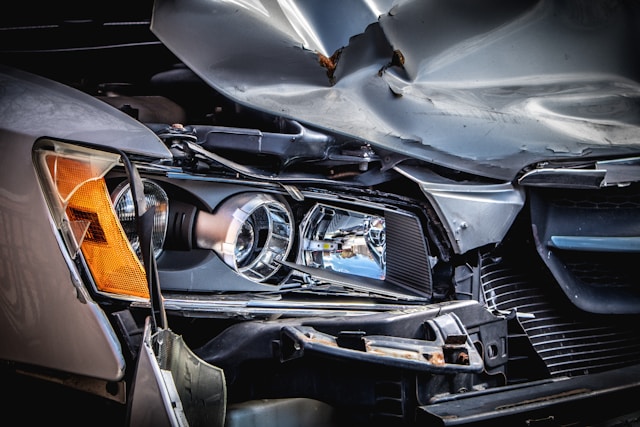Car accidents are unpredictable, stressful events that can have long-term physical and emotional consequences. Even little impacts can cause injuries that interfere with daily living, restrict movement, and require intensive therapy. This information will enable victims of an accident to negotiate the aftermath with more clarity and wise decisions.
Whiplash
Whiplash is one of the most prevalent injuries in car accidents, especially rear-end collisions. It occurs when the head goes abruptly backward and then forward, as if it were a whip. This quick action causes the soft tissues of the neck to stretch and tear, resulting in pain, stiffness, and reduced range of motion. Symptoms can include headaches, vertigo, and can be cognitive issues. Whiplash is often underappreciated, but if not addressed immediately, it can have long-term consequences. Rest, physical therapy, and medications are commonly used to reduce inflammation and promote healing. Gentle stretching exercises, when performed under professional supervision, help to progressively restore neck function.
Concussions
A concussion is a type of traumatic brain damage produced by a quick hit or jolt to the head, which is most typically seen after a high-impact car accident. The force of the accident causes the brain, cushioned within the skull, to collide with the inner walls of the skull. This effect can cause a variety of symptoms, including disorientation, headaches, memory loss, nausea, and brief loss of consciousness by upsetting normal brain activity. Usually, the first stages in treatment are rest and avoidance of demanding activity. More severe versions could call for medical imaging to rule out internal hemorrhage or edema. Concussions should be closely watched and never taken lightly since repeated injuries can have long-term neurological effects.
Broken Bones
A car accident can cause tremendous force, resulting in fractures in numerous regions of the body, such as the arms, legs, ribs, and even the pelvis. Extremely painful, broken bones could cause swelling, bruising, and limited movement in the area afflicted. While more complicated fractures can call for surgical intervention with metal rods, plates, or screws, simple fractures could just need immobilization with casts or splints. Rest, physical therapy, and occasionally long-term rehabilitation combined help to regain full strength and functionality in shattered bones. Bone injuries are especially critical as, if not correctly aligned and treated early on, they can cause long-lasting problems. Preventing more complications and guaranteeing total healing depends on proper medical assessment and quick intervention.
Soft Tissue Injuries
Soft tissue injuries are those to muscles, ligaments, and tendons caused by an automobile accident. Sprains, strains, and contusions are common types of injuries. Because they do not appear on standard X-rays, such injuries are commonly overlooked in the initial assessment. However, if left uncontrolled, their impact can be significant and long-lasting. The RICE method, commonly used to treat soft tissue injuries, attempts to reduce inflammation and restore function. Physical therapy is also extremely crucial in recovering strength and flexibility. Soft tissue damage can substantially impair one’s ability to engage in daily activities; therefore, it should be addressed with the same severity as obvious injuries. Early detection and continuing treatment are critical since long-term neglect can result in chronic discomfort or permanent damage to the affected area.
Spinal Cord Injuries
Spinal cord injuries are some of the most serious consequences of car accidents, frequently resulting in partial or total loss of motion and sensation below the site of injury. These injuries can result from vertebral fractures or dislocations, which compress or sever the spinal cord. Immediate medical intervention is required to stabilize the spine and avoid additional damage. If a spinal injury is caused by a collision involving commercial vehicles or negligence, it can be prudent to consult a California truck accident lawyer from a reputable source to investigate legal options and guarantee that the injured party’s rights are protected. Surgery, anti-swelling medicines, and long-term physical therapy are common treatments. Spinal cord injuries have a significant impact on people’s lives, not just physically but also emotionally and financially.
Conclusion
Understanding the most common injuries caused by car accidents and how to treat them can make a significant difference in the aftermath of a collision. Every injury, whether whiplash, concussion, fractured bones, soft tissue damage, or spinal cord injury, presents unique challenges and necessitates specialized medical care. Effective recovery begins with an early diagnosis, effective therapy, and regular follow-up. If not managed properly, seemingly small injuries might turn into long-term problems. Recovery frequently necessitates not just physical but also mental and emotional adaptation. Professional legal advice can also be required in more serious situations when liability and legal difficulties arise.


